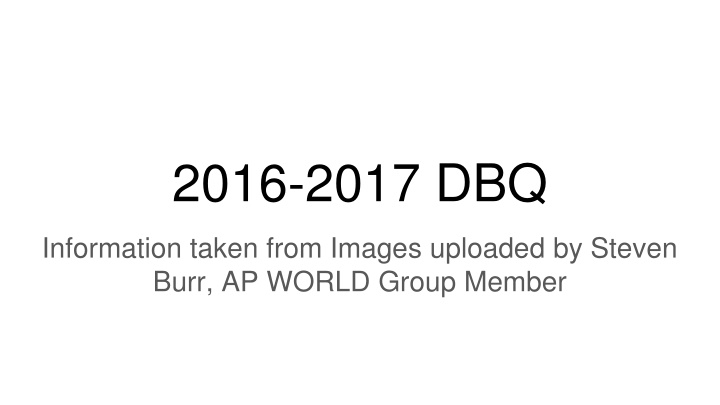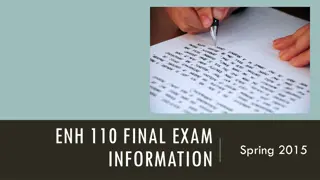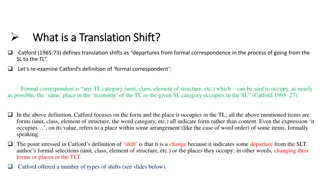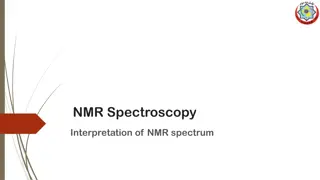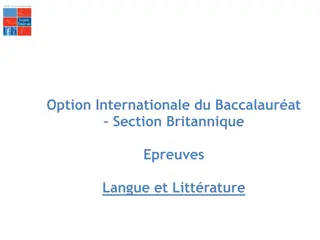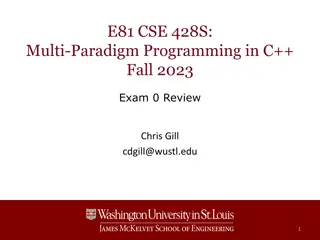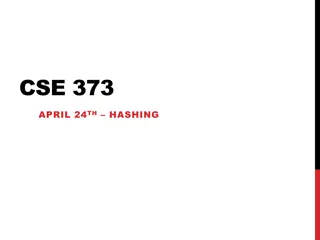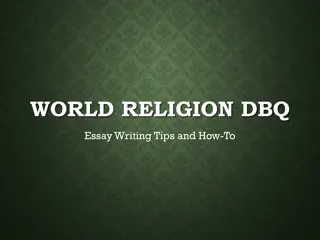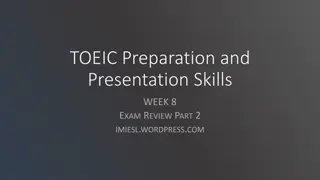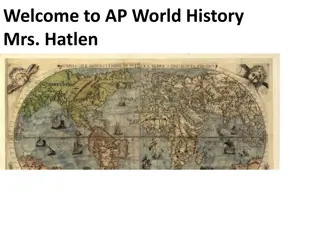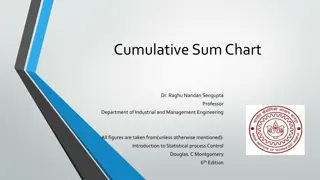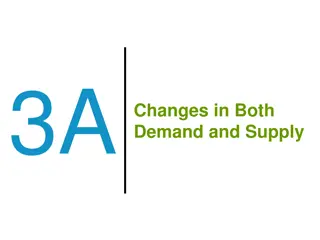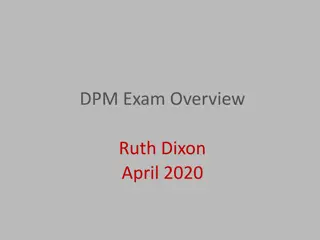Revised AP World History DBQ Exam Format and Design Shifts
The 2016-2017 AP World History DBQ exam format features a revised structure with multiple-choice and short answer sections, as well as document-based questions (DBQ) and long essays. The exam now includes shifts in design, such as the inclusion of visual documents, emphasis on additional evidence, the requirement for a comprehensive thesis, synthesis of arguments, and thorough document sourcing. These changes aim to enhance students' analytical skills and historical understanding.
Download Presentation

Please find below an Image/Link to download the presentation.
The content on the website is provided AS IS for your information and personal use only. It may not be sold, licensed, or shared on other websites without obtaining consent from the author.If you encounter any issues during the download, it is possible that the publisher has removed the file from their server.
You are allowed to download the files provided on this website for personal or commercial use, subject to the condition that they are used lawfully. All files are the property of their respective owners.
The content on the website is provided AS IS for your information and personal use only. It may not be sold, licensed, or shared on other websites without obtaining consent from the author.
E N D
Presentation Transcript
2016-2017 DBQ Information taken from Images uploaded by Steven Burr, AP WORLD Group Member
Features of Exam Current Exam Revised Exam Format Multiple-Choice Section 70 questions 55 minutes 50% weight 55 questions 55 minutes 40% weight Short Answer none 4 question sets 50 minutes 20% weight DBQ Up to 10 documents Bringing in outside knowledge beyond documents is one of several ways to earn points in expanded core 50 minutes (including 10 minute reading period) 16.7% weight 7 documents Requires bringing in additional evidence beyond documents 55 minutes (including reading period) 25% weight Long Essay(s) One CCOT question One Comparison question 40 minutes each 16.7% weight each Students select one of two questions; both questions are same skill (Comp, CCOT, Causation, or Periodization 35 minutes 15% weight
Shift #1: 7 Documents At least one document will be a visual (chart, graph, map, art, etc.).
Shift #2: Additional Evidence Teaching the content in the Curriculum Framework will provide students with the knowledge to earn the additional evidence point.
Shift #3: Thesis responds to ALL parts of the prompt Prompt language specificity. Example: - Analyze changes and continuities in - Analyze at least one change and at least one continuity in
Shift #4: Synthesis Student needs to connect or expand the argument to a different time, space, theme, or discipline.
Shift #5: Sourcing the Docs Student must source (historical context, intended audience, purpose, point of view) at least 4 docs
5 Design Shifts for Revised DBQ 1. 7 Documents 2. Additional Evidence 3. Thesis responds to ALL parts of question 4. Synthesis -- expand/connect argument 5. Sourcing at least 4 docs.
Utilize the Documents - Understanding and Evidence = Legacy - Utilize the Documents awards no points for basic Understanding - Must be in support of a historical claim
Contextualization - Situates the argument in wider Historical Context
The Pilot DBQ Prompt: 1. Using the documents provided and your knowledge of World History, analyze the degree to which communist movements affected women s struggle for rights in the twentieth century.
Doc 1: Alexandra Kollontai Russian Communist revolutionary and member of the Bolshevik government, autobiography, Soviet Union, 1926 Marxism will bring women s liberation Author noticed a lack of concern for women s rights in 1905 among Bolsheviks Author dismisses efforts of Russia s bourgeois women Author helped achieve improvements for women under Bolsheviks
Doc 2: Mariia Fedorovna Muratova, Soviet official in the Women s Department of the Bolshevik Central Committee, working in Soviet Uzbekistan, 1930 Soviet communism seeking to end veiling in Uzbekistan among party members Veiling seen as remnant of feudal past Directive for party members to end veiling in their families
Doc 3: Communist North Vietnamese Constitution of 1960 Communist North Vietnam promising full equality for women Constitution declares: Equal pay Paid maternity leave Access to maternity care, child-care, and
Document 4 Source: Study published by the National Science Foundation, Washington, D.C., 1961. PERCENTAGE OF WOMEN AMONG RESEARCH AND PROFESSIONAL PERSONNEL IN THE SOVIET UNION, 1947-1959 1947 1950 1955 1959 Doctorate degree holders or doctoral candidates 29% 27% 27% 29% Professors 5% 5% 6% 7% Associate Professors 14% 15% 17% 17% Senior research associates 31% 30% 30% 29% Junior research associates 48% 48% 52% 51% All research and professional categories 35% 36% 36% 36%
Doc 4: Study published by the National Science Foundation, Washington, D.C. 1961 Majority of data shows women not equal to men in USSR PHD s Professors Associate Professors Senior Researchers Women close to parity in Junior Research category
Document 5 Source: Encourage Late Marriage, Plan for Birth, Work Hard for the New Age propaganda poster for the Chinese Cultural Revolution, published by the Hubei Province Birth Control Group, Wuhan city, circa 1966-1976. Encourage Late Marriage, Plan for Birth, Work Hard for the New Age, published for the Wuchang Town Birth Control Group, Wuhan City 1970s (colour litho), Chinese School, (20th century) / Private Collection / DaTo Images / Bridgeman Images
Doc 5: Encourage Late Marriage, Plan for Birth, Work Hard for the New Age, propaganda poster for the Chinese Cultural Revolution, published by the Hubei Province Birth Control Group, Wuhan city, 1966-1976 Chinese communism provides women opportunities in key, high-tech jobs Women are needed to help China modernize Poster promotes delaying child birth so women can join labor force
Doc 6: Fidel Castro, president of Cuba, speech to Federation of Cuban Women, 1974 Castro admits that women didn t attain equality in communist Cuba Women have high communist credentials Never overcame patriarchy Castro promises to continue the struggle
Document 7 Source: Open letter circulated by anonymous women s group in Romania, addressed to Elena Ceausescu, wife of Romanian Communist Dictator Nicolae Ceausescu, 1980. Published in a French periodical in 1981. Where is our agricultural produce, dear First Lady of the country, *? We would dearly love to know it, from yourself, in your capacity of communist woman, wife and mother, where is our foodstuff? Where on earth could one find cheese, margarine, butter, cooking oil, the meat which one needs to feed the folk of this country? By now, you should know, Mrs. Ceausescu, that after so many exhausting hours of labor in factories and on building sites we are still expected to rush about like mad, hours on end, in search of food to give our husbands, children, and grandchildren something to eat. You should know that we may find nothing to buy in the state-owned food shops, sometimes for days, or weeks on end. And finally if one is lucky to find something, as we must stand in endless lines, which in the end stop all desire to eat and even to be alive! Sometimes we would even feel like dying, not being able to face the suffering, the utter misery and injustice that is perpetrated on this country. First lady Elena Ceausescu was known for her lavish lifestyle.
Doc 7: Open letter circulated by anonymous womens group in Romania, addressed to Elena Ceausescu, wife of Romanian Communist Dictator Nicolae Ceausescu, 1980. Published in a French periodical in 1981. Most women suffer in Communist Romania Women did get factory jobs, but: But food shortages hurt women and families Women were stuck doing domestic work after long days in factories Wives of party officials live rich lives
A.Thesis A.THESIS AND ARGUMENT DEVELOPMENT (2 Points) Thesis (1 point) Makes historically defensible claim that responds to all parts of the question. Thesis may be one or multiple sentences Thesis may be located either in the introduction or conclusion, but not split between the two. Thesis must be discrete, meaning it cannot be pieced together from multiple places. The thesis cannot be counted for credit in any other portion of the rubric. Key Terminology Historically defensible claim Responds to all parts
Thesis Example that Works: Communism furthered the struggle for women s equality in the 20th century, but not as much as it said it did as shown by how women fought for their own rights, how others fought and viewed women s rights, and how women were equal in theory, but not in actuality.
Thesis Non-Example: One that doesn t work: Women in some of these countries (Vietnam and China) were given rights, but in most countries they continued to be held back from gaining power (USSR, Cuba, Romania). Not related to communism
A.ARGUMENT DEVELOPMENT Argument Development (1 point) Develops and supports a cohesive argument that recognizes and accounts for historical complexity by explicitly illustrating relationships among historical evidence, such as contradiction, corroboration, and/or qualification. Key language: Develops & supports a cohesive argument Recognizes and accounts for historical complexity Contradiction, corroboration, qualification Rewards a student that develops and supports a cohesive/complex argument throughout the essay Earned independently (not expanded core )
Argument Development MODEL INTRO with competent THESIS Body 1: Communism promotes equality for women Discusses docs 1, 2, 3, CORROBORATION Body 2: Reality did not match the promise Discusses docs 4, 5, 6, 7 CONTRADICTION / QUALIFICATION Evidence in body paragraphs also supports argument Could still be earned without thesis (must have an argument) Argument must be complex
Argument Development non-Example: THESIS: Communism effected women s rights in political, social, and economic ways TOPIC SENTENCE: The political ways . TOPIC SENTENCE: The social ways TOPIC SENTENCE: The economic ways Simple structure is not enough!
B. Utilizing Docs as Evidence B. DOCUMENT ANALYSIS (2 points) Utilizing docs as evidence (1 point) Utilizes or deploys the content from at least six documents to support the stated thesis or a relevant argument. Cannot earn the point for merely quoting or paraphrasing the documents with no connection to the thesis or an argument. DBQs will have 7 documents Higher bar than simply accurately interpreting a document Must utilize or DEPLOY 6 documents to support an assertion/arguments Utilizes is the old Evidence level (no more understands level)
Utilizing Documents: Example 1 Doc 1: Kollontai noticed how little her party cared about the fate of working-class women
Utilizing Documents: Example 2 Doc 2: A female Soviet official explains that the Central Asian Muslim tradition of wearing veils opposes the fundamentals of the Communist Party this shows how communists ideals supported equality.
Utilizing Documents: Example 3 In doc 5, a propaganda poster from communist China shows many women pursuing countless professional fields. This shows that Communist movements supported the advancement of women s roles.
Example of Unacceptable Utilization Document 5 shows the communist government of China promoting a lot of industrial growth. The images show growth in many high-tech industries, such as manufacturing, aerospace, medicine, and science. Not related to women s rights
B. Sourcing/POV B. DOCUMENT ANALYSIS (2 points) Sourcing docs (1 point) Explains the significance of author s point of view, author s purpose, historical context, and/or audience for at least four documents. Must source 4 documents Four ways to do this: Explain the significance of: a. Author s point of view b. Author s purpose c. Historical context (new - Little c context) d. Intended audience
Sourcing by POV Must explain the SIGNIFICANCE of the author s point of view
Sourcing: Successful Example - POV (Document 3) In the North Vietnamese Constitution, it not only claims democracy, but claims women have complete equality to men, which they did not. It is a government document, so obviously it would glorify Vietnam as a country flooding with equality
Sourcing: Non-Example - POV The author of document 2 is a government official who cares about women s rights but many other people in her party didn t. Does NOT explain how being a government official shapes or informs what is said in the doc.
Sourcing by Purpose Must explain the SIGNIFICANCE of the author s purpose Must explain how the author s purpose shapes or informs the content of the document
Sourcing by Audience Must explain the SIGNIFICANCE of the audience Must explain how the audience shapes or informs the content of the document.
Sourcing Example: Audience/Purpose Document 6 is Cuban communist leader, Fidel Castro, speaking to a women s organization. It is likely that he is trying to persuade more women to join the communist party. The Chinese propaganda poster in doc 5 supports advancement of women This poster, made to gather support for the communist revolution, was published to appeal to the wants and needs of the women.
Sourcing by Historical Context Must explain the SIGNIFICANCE of the historical context Must explain how the context (contemporaneous developments not described in the document) shapes or informs the content of the document Uses context to situate one document Called little c context
Sourcing Example: Context (1) In doc 3, This shows that a communist government officially legislated the equality of women. This would have been something like a slap in the face to the USA who fought to limit the spread of communism in Vietnam, only to fail and see them enforce feminist laws that the U.S. had not.
Sourcing Example: Context (2) Doc 4: While likely accurate, coming from a US source raises the question of its legitimacy, as the US was locked in the Cold War with the USSR, and may have simply wanted to rally the American people against the Soviet Union.
Sourcing by context: Non-Example Simply mentioning a piece of context without explaining the significance to the topic is unacceptable. Doc 4, written during the Cold War, shows that women in Russia were not equal to men, especially in top jobs.
Part C: Contextualization C. EVIDENCE BEYOND THE DOCS (2 points) Contextualization (1 point) (When you read the doc what does it remind you of historicaly. Situates the thesis, argument, or parts of the argument by accurately and explicitly connecting the effects of Communism on women s rights to larger global historical processes. Essay explains the broader historical events, developments, or processes immediately relevant to the question. Big C contextualization situates the thesis, argument, or parts of the argument to broader events, developments, or processes Best situated in intro or conclusion to differentiate from sourcing ( little c ) context Must be immediately relevant and well explained
Big C Context Industrialization Marxist Ideology The Cold War Enlightenment Ideology Global Feminism Communism and Women s Rights Making connections to and from global processes SITUATING the topic of the essay or the argument, into the larger flow of historical events
Examples of possible events, developments, or processes for contextualization Marxist ideology, specifically relating to class struggle, stages of historical development, need to radically reform society, inevitability of progress to communism, etc. Soviet and other communist countries economic and social policies, including collectivization, nationalization, rapid industrialization, economic planning, drastic expansion of educational opportunities, expanding social welfare, guaranteeing employment, etc. NOTE: To earn the point, these examples must be accurately and explicitly connected to the effects of communism on women s rights, beyond a mere mention.
Contextualization Big C Example 1 in Intro Women s rights have been a struggle that many females tried to achieve ever since the early beginnings of industrialization. The unfair divide industrialization caused led to a mass usage of Enlightenment or socialist ideals which in some ways supported women s rights. THESIS ..
Contextualization Big C Example 2 While women struggled for freedom throughout the western world, communist revolutions were radically equalizing for females, helping the suffragettes everywhere.
Contextualization Big C: Non-Example In the 20th century, the two world wars gripped the world with bloodshed and fear. Between the wars, the Great Depression saw the world experience the greatest economic collapse in history. These events led many to look to socialism and communist movements as a way to create a better world. CONTEXT NOT IMMEDIATELY CONNECTED TO WOMEN S RIGHTS
